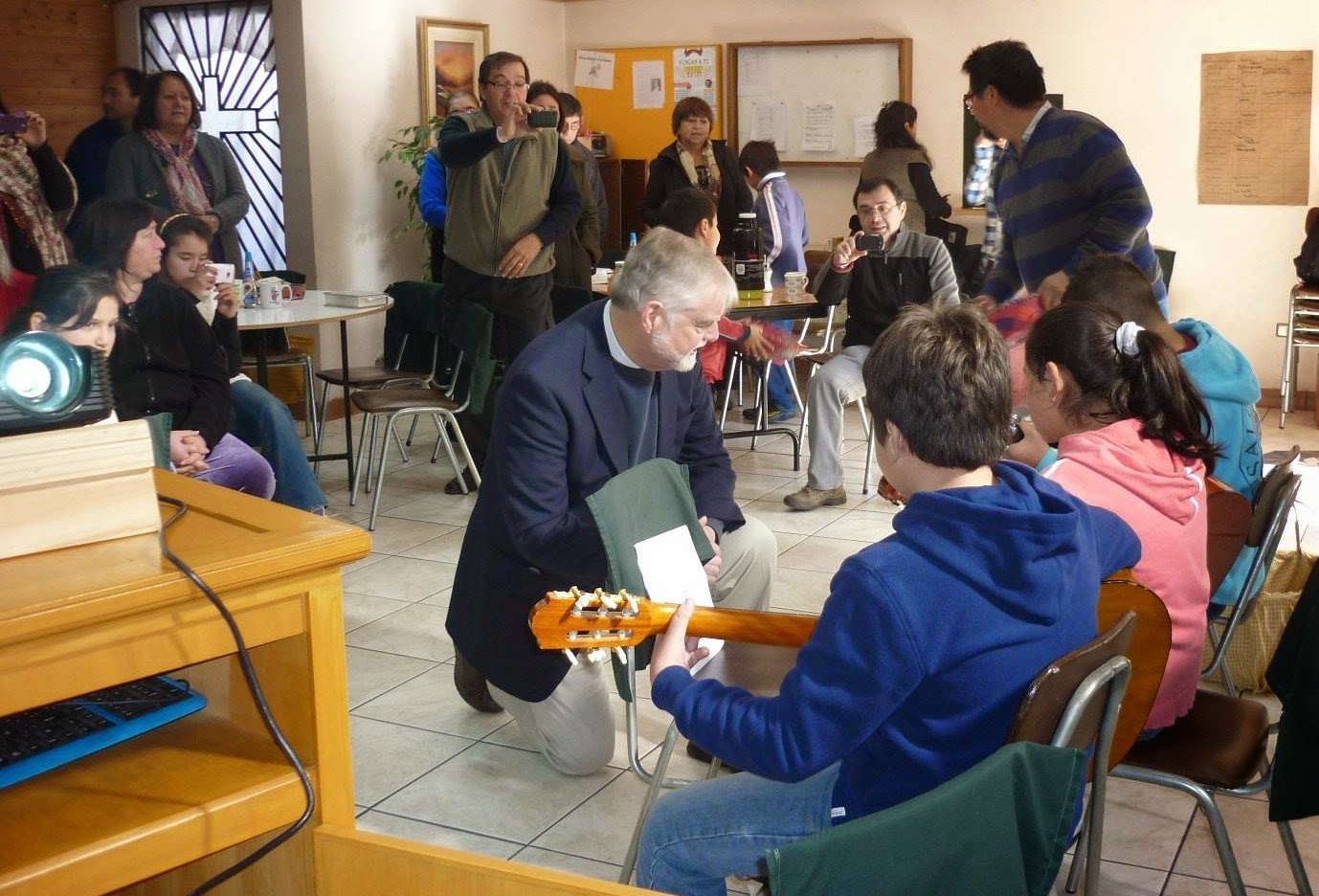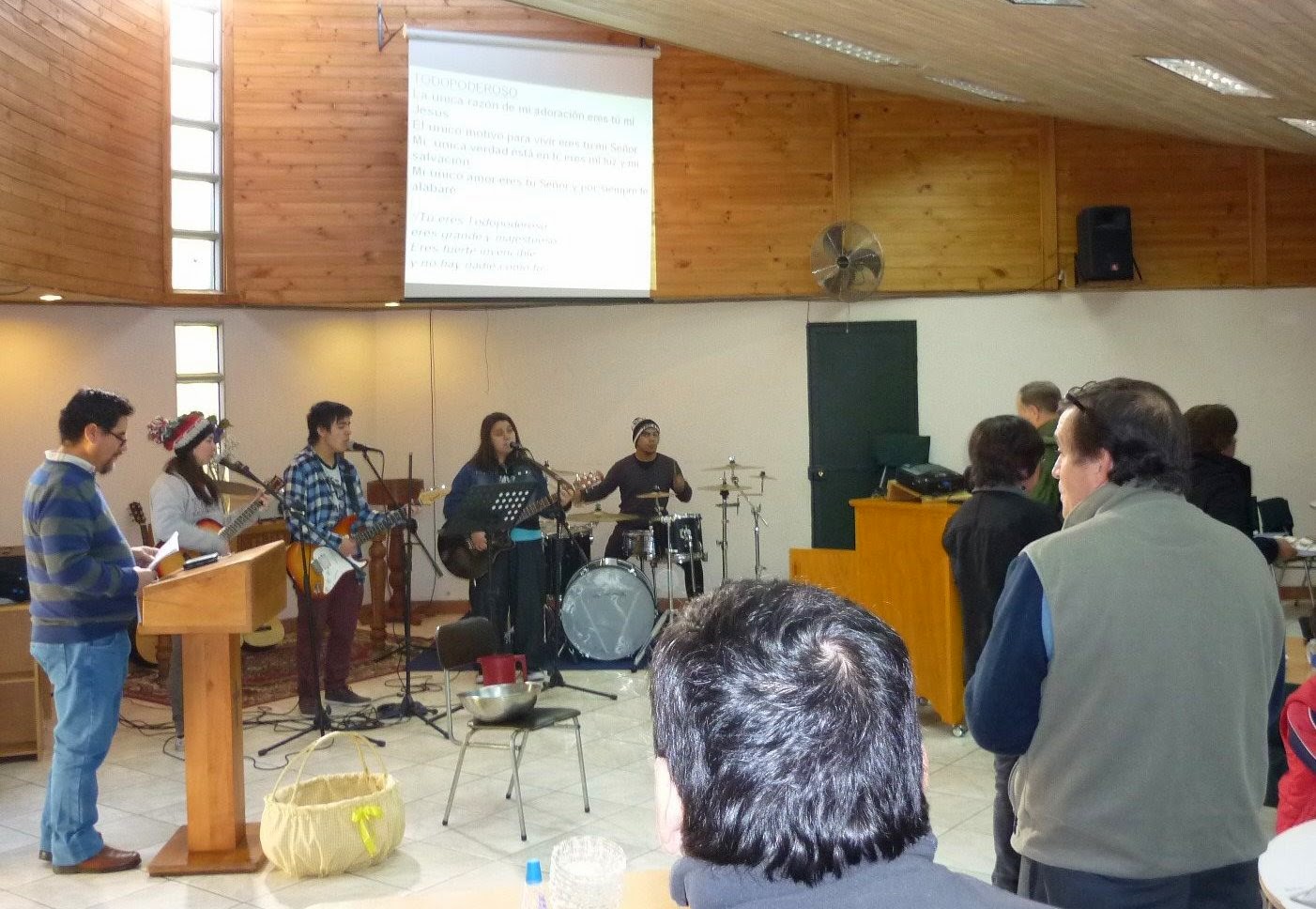For the last three years, or more, I have been teaching a weekly guitar class at our church’s children’s ministry outreach to the local community. During this time I have had about 10 students in total pass through the class. I try to restrict the class to no more than three children at any one time, because, if I have any more than that, then I cannot give each of them the individual attention needed. I also take children only of about 10 years and older. We have many smaller ones who come to the children’s ministry, but when they are younger than 10, I find they don’t have the attention span and powers of concentration needed to make progress. Each child also needs to have access to a guitar, to practice at home.
 My approach is very elementary. I start off by teaching the children basic chords, using chord diagrams, and then give them simple praise songs to sing which use these chords. I start off with a song that requires knowledge of (say) only D and A, which they can usually pick up quite quickly, and can get joy out of singing to their families at home. I also start off with a very basic strum pattern to accompany the song. Then comes the next big challenge, i.e., to learn the G chord, which requires a much bigger stretch of the fingers of the left hand. This usually takes several weeks, depending on how much they practice at home. When this is accomplished, it opens up a wider choice of new songs for the children to learn. Following this, I go on to teach them the C chord, which also takes some time to master, and then they learn their first minor chord, Am. All of the time I try to incorporate new songs which use the new chords, and to have the children learn other ways to strum the guitar. At each stage I try to enable them to obtain some little reward for their work, which is to actually enjoy their playing and singing praise to the Lord. Recently, I also taught them how to play “Cumpleaños feliz” (“Happy Birthday to you”), which they absolutely loved!
My approach is very elementary. I start off by teaching the children basic chords, using chord diagrams, and then give them simple praise songs to sing which use these chords. I start off with a song that requires knowledge of (say) only D and A, which they can usually pick up quite quickly, and can get joy out of singing to their families at home. I also start off with a very basic strum pattern to accompany the song. Then comes the next big challenge, i.e., to learn the G chord, which requires a much bigger stretch of the fingers of the left hand. This usually takes several weeks, depending on how much they practice at home. When this is accomplished, it opens up a wider choice of new songs for the children to learn. Following this, I go on to teach them the C chord, which also takes some time to master, and then they learn their first minor chord, Am. All of the time I try to incorporate new songs which use the new chords, and to have the children learn other ways to strum the guitar. At each stage I try to enable them to obtain some little reward for their work, which is to actually enjoy their playing and singing praise to the Lord. Recently, I also taught them how to play “Cumpleaños feliz” (“Happy Birthday to you”), which they absolutely loved!
My main difficulties with my guitar students have been maintaining consistency of attendance at the classes, and getting them to practice regularly at home. I continually emphasize the importance of this, both to the children themselves, and to their parents, upon whom a lot depends. My current students have very supportive parents who encourage them to come to the children’s center regularly, not just to learn guitar, but to participate in the other activities and classes. They are all doing quite well, and the first photo (above) shows them playing together in the church and leading a song for the offertory.
Although my approach is simple, it has been quite successful. Two of my former students, one of whom knew nothing about the guitar when she started, are now playing in our church youth band. Together with two other young people, they have already provided all of the music for several of our church services, and want to increase their involvement in the future. This is very encouraging. They have now progressed to the stage where they understand enough music to be able to select their own new music, and teach themselves the chords and playing techniques required to perform it. However, at this stage, another aspect of the learning process becomes important. This is to recognize that, as church musicians, their main function is not just to perform the music for its own sake, but to see their playing and singing as a ministry to lead other people into worshiping God.

